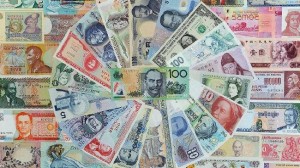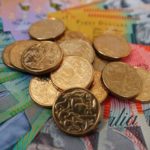 Australian dollar traded lower against its US peer on Monday, following a report on Australian home loans and a set of Chinese data points, released during the weekend.
Australian dollar traded lower against its US peer on Monday, following a report on Australian home loans and a set of Chinese data points, released during the weekend.
AUD/USD fell to a session low during the early phase of Asian trade, after which consolidation followed at 0.9460, losing 0.06% for the day. Support was likely to be received at October 10th low, 0.9390, while resistance was to be met at September 19th high, 0.9524.
It became clear that the number of Australian home loans dropped 3.9% in August on a monthly basis, after a 2.1% increase in July, while preliminary estimates pointed a lesser decrease in loans, 2.5%. The indicator has demonstrated six consecutive months of gains until August this year, as housing sector in the country, supported by low interest rates, has outperformed other sectors of the economy. The increasing number of building permits in Australia in the recent months also provided support to housing market.
At the same time, Chinese overseas shipments dropped 0.3% in September on annual basis, while imports climbed 7.4%, according to an official report, released on October 12th. The median estimates pointed a 5.5% increase in the export figure and 7% climb in imports. This data influenced the Aussie, as China is Australias largest export market.
Additionally, on Monday the National Statistics Bureau of China said that nations index of producer prices shrank 1.3% in September, adding to the 1.6% decline a month ago. Experts had projected a 1.4% decrease.
On the other hand, Chinese consumer price index (CPI) rose to 3.1% in September from 2.6% in August, while estimates pointed an advance to 2.9%. Higher food prices contributed the most this result, as prices climbed at the fastest pace since May 2012. With all these data points taken into account, it seemed that Chinese economic recovery could appear to be restrained, especially with the government trying to use other measures to spur economy, that do not include new monetary stimulus.
“There are still various factors which point to a weaker Aussie,” said Janu Chan, an economist at St. George Bank Ltd. in Sydney, cited by Bloomberg. “The Australian dollar is still quite high by historical standards and still looks like it’s at a point where it’s contractionary for the economy, so this year we are expecting a below-trend growth.”
The Reserve Bank of Australia is expected to release the minutes of its October meeting on policy tomorrow. The bank kept its benchmark interest rate at the current record low level of 2.50% on October 1st, stating that the national currency was still lower in value compared to April, despite the recently recorded gains.
Meanwhile, the Australian dollar was lower against the euro, with EUR/AUD cross advancing 0.16% on a daily basis to trade at 1.4339 at 6:45 GMT. AUD/NZD pair was falling 0.32% to trade at 1.1347 at 6:46 GMT.





